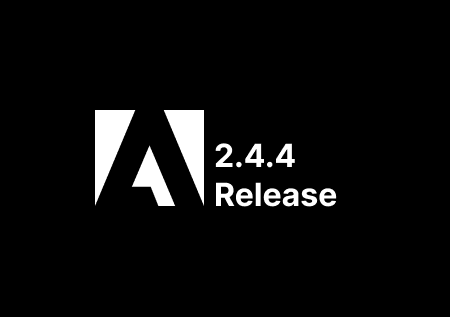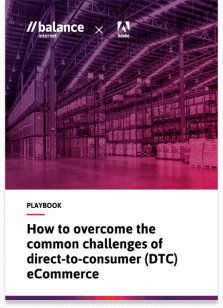Adobe Commerce Updates — Accelerating digital commerce with 2.4.4 release
Latest news / 29 June 2022


A new step forward for Adobe Commerce — The latest Adobe Commerce 2.4.4 release marks a new step forward in commerce capabilities, security, and performance. The advancements in the release will set the foundation for the next several years of Adobe innovations to make sure your commerce business is resilient.
Here’s everything you need to know about the 2.4.4 release highlights:
Future-proof, high-performance solution
Adobe Commerce 2.4.4 enables customers to future-proof and accelerate the growth of their digital commerce businesses. With new functionality delivered through independent modular services rather than through core code updates, customers can benefit from faster feature adoption along with easier and less frequent upgrades.
This release strategy from Adobe also intends to ensure that customers maintain the ability to adapt to changing market trends with continued flexibility.
Adobe is saying that 2.4.4 is the fastest and most scalable version ever. Customers can confidently handle complex catalogues up to 10 times larger, process 5 times higher transaction volumes per hour, and deliver substantially faster API response times. Customers also gain significant performance improvements for both the admin and storefront from the adoption of PHP 8.1.
Industry-leading headless commerce
Adobe is continuing to build on its leadership in headless commerce by increasing GraphQL API coverage for several B2B and admin features, as well as adding new capabilities to PWA Studio 12.3 with this release.
Comprehensive platform monitoring
Adobe has expanded the availability of the valuable Site-Wide Analysis Tool to Adobe Commerce customers hosted on-premise. Now, all Adobe Commerce customers have access to its real-time monitoring, reporting, insights, and recommendations.
New branding and accessibility enhancements
With this release, customers will notice Adobe’s new branding. To complement the product name change, you will now see the Adobe Experience Cloud logo on the login screen and admin. This visual indicator is intended to remind users that Adobe Commerce is an integral part of the Adobe Experience Cloud portfolio of applications.
Additionally, Adobe is updating the admin to better align with accessibility standards, including accessible naming and tagging, which will enable users without vision or with limited vision to use assistive technology to interact with the Adobe commerce backend.
What stands out about the 2.4.4 release?
The 2.4.4 release will include several new platform updates, which will impact upgrading for all merchants. It will be powered by PHP 8.1 together with several key framework upgrades including:
Support for new OpenSearch Search & Analytics Suite: The latest version supports multiple system dependencies including Elasticsearch, Redis, MySQL, JS libraries, and composer dependencies.
Plus, removal of older JS libraries, redundant Laminas libraries, and NPM dependencies.
If you’re keen to know more about the technical platform changes, check out this article on the Adobe Commerce Devblog.
How can businesses start preparing for the transition to 2.4.4 now?
Upgrading your Adobe platform is critical to ensuring that your digital commerce solution stays secure, performant and PCI-compliant. At Balance, we have developed a structured upgrade pathway to walk you through critical considerations. There are three main phases of an upgrade to be aware of; product launch, annual planning, and upgrade execution. We take you through each stage step-by-step.
Merchants should also look at Adobe’s new 2.4 Upgrade Guide, which helps you better understand the Adobe Commerce upgrade journey, the importance of upgrading regularly, and how to best plan and prepare for an upgrade.
Our HOT TIP for anyone ready to commence an upgrade
Adobe recommends upgrade paths to get to 2.4.4 or a later version, and there are different options depending on the merchant’s current version. Our hot tip is to utilise Adobe’s upgrade compatibility tool to start with and run quick prototype activity to identify your incompatibility areas.
The upgrade compatibility tool checks Adobe solutions against the target upgrade version and provides a summary of key things that will need to be factored into the upgrade process.
When is the end of support dates for 2.3, 2.4.0 – 2.4.3?
The end of support dates for Adobe Commerce 2.3 has been shifted to September 8th 2022, to provide additional time to upgrade to 2.4.4. More information about this is available here.
Support for Adobe Commerce 2.4.0 – 2.4.3. ends on November 28, 2022, which aligns with the end of support for PHP 7.4.
Extended Support — For customers who need more time to migrate to 2.4.4, Adobe will offer an option to add extended support to your licence for up to one year following the EOS date for each specific Commerce version built on PHP 7.4 (2.3.7, and 2.4.0 – 2.4.3). Please contact your Account Manager or Customer Success Manager to discuss more details.
Adobe Commerce Cloud TOP 5 Initiatives
Magento Commerce is the engine under the Adobe Commerce Cloud, but as part of the latter, users also get integrated Analytics, Target, AEM Sites and more to make it a big enterprise package.
But the driving point Adobe made at Imagine 2019 is that Magento Commerce as a standalone offering is going nowhere for those that don’t need the built-in extra capabilities. Smaller customers can have one without the other, and those who are so inclined can grow into the enterprise Commerce Cloud when they are ready. These are to top Commerce Cloud initiatives that were announced in 2019:
- Omni-channel Sales on Amazon
Magento synchronizes product catalogues, inventory and order information across Magento and Amazon so you can manage both from an admin perspective within Magento. The integration enables you to reprice your products differently on Amazon to compete with others in the marketplace, and it makes fulfilment easier to handle because you can use Fulfillment by Amazon.
- Omni-channel Advertising on Google Shopping
There is now a free end-to-end integration with Google Advertising. Customers can use Google ad types, and smart shopping campaigns that leverage Google’s AI – all from within the Magento UI framework. Specter told me that they are asked a lot about this integration and that a lot of companies partner with Google, particularly in the mid-market.
- Adobe Experience Platform Launch Extension
For those that want the full Adobe Commerce Cloud, the launch extension enables them to deploy Magento and Adobe solutions faster. Web and SDK management, a common data layer, and common identity are part of the integration, along with real-time insights and real-time personalization. Specter said that this extension was built by the Magento community (#axp-connector) and integrates Magento and Adobe Analytics.
- Progressive Web Apps (PWA)
PWA is the future of mobile shopping, even better than responsive design. The Progressive Web Apps Studio integrates Braintree/Paypal enabling debit and credit transactions through a trusted gateway. PWAs offer a modern architecture that includes Google GraphQL, React and Webpack.
- Production Recommendations powered by Adobe Sensei
Further, Magento’s priority is Commerce Intelligence, which aims to enable intelligent experiences, uncover insights and employ better measurements. Magento-based stores can now enjoy it with product recommendations powered by expanded dashboarding, notifications and data in MBI, and Adobe Sensei which is an essential AI & Machine Learning tool. With Adobe Sensei you can gather data about shoppers’ behaviour and deliver contextually and personally relevant product recommendations at key locations during the shopping experience.
Still have more questions?
Get in touch with our team to discuss key features of the latest release and effort and timing considerations for your upgrade pathway.



